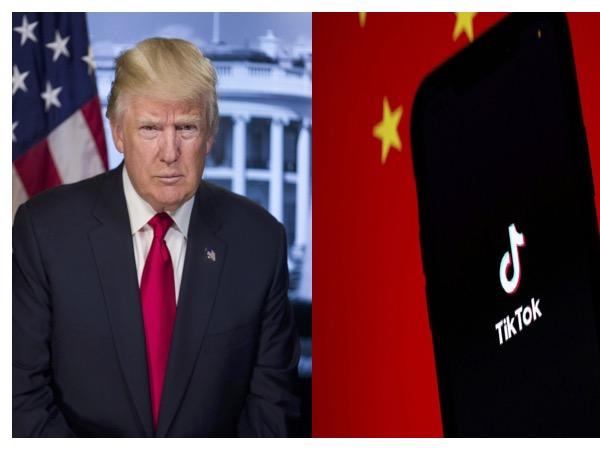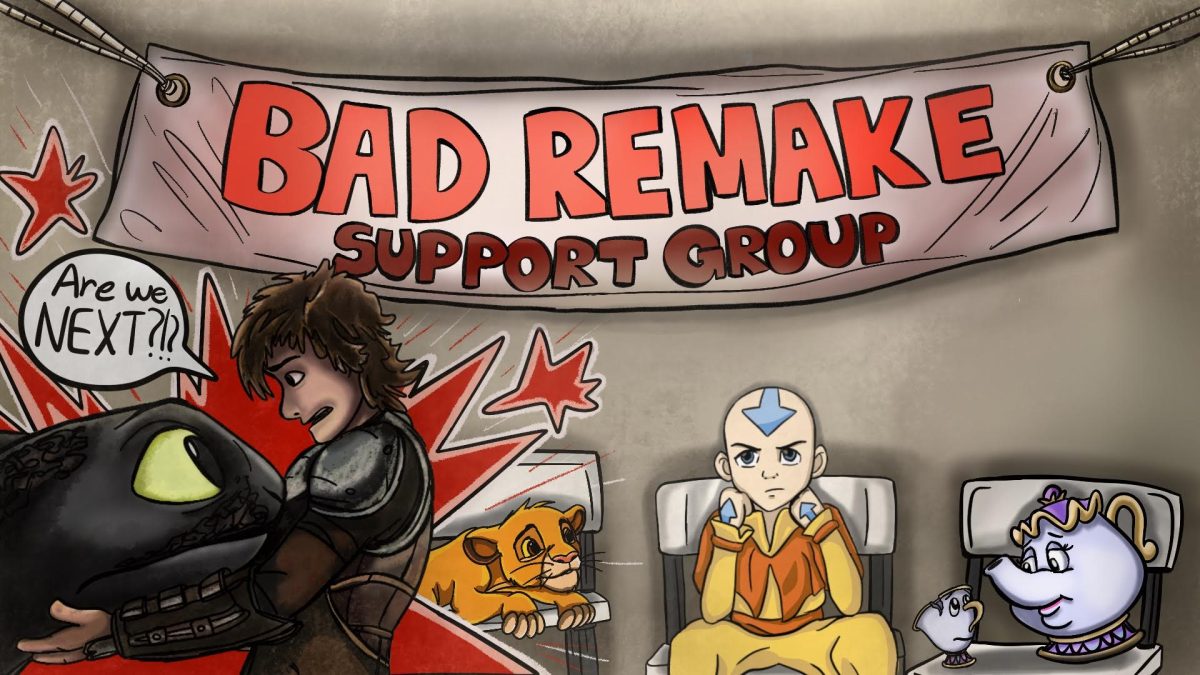Avatar: The Last Airbender (AtLA) is widely considered one of the greatest cartoons of all time. With its beautiful animation, fantastic plot, well-developed characters, stellar worldbuilding, and timeless memorability, it is one of the most beloved works of fiction among Gen Z viewers, adored by children and adults alike.
It also, however, has had the misfortune of being artistically desecrated for a cash grab, not once but twice, making it a telling canary in the coal mine among remakes of animated media.
By failing to respect animation as a storytelling medium, and banking on existing nostalgia over artistic innovation, live-action remakes are a creative cop-out on principle. Reminding young adults of our childhoods is a ploy to sell us inferior knockoffs of the stories we grew up loving.
Although the success of billion-dollar blockbusters like Beauty and the Beast (2017) makes it clear why many studios are following Disney’s lead in pumping out more remakes, films and shows are not mere consumer products—they are a form of art, deserving of artistic integrity and respect.
To understand why remakes have become such a problem in film culture, it is key to recognize that the medium of animation is neither “just for kids” nor an arbitrary choice. The majority of animated works are animated for a reason—a reason intrinsically necessary for the story to work the way it does.
The original Lion King, for instance, is animated for a glaringly obvious reason: the characters are all talking animals. Not only do they act in ways that real animals cannot, they also need stylized designs to make them relatable to a human audience, such as showing their emotions through facial expressions.
Similarly, the premise of Avatar: The Last Airbender, intrinsically relies on fantasy details that are physically impossible in reality: people “bending” water, air, earth and fire with their bare hands, or a giant, six-legged, fluffy flying bison as our heroes’ lovable steed.
Sure, computer-generated imagery (CGI) spliced onto live-action footage can give the impression of fantasy, and for some films putting a new spin on traditionally animated characters—such as Sonic the Hedgehog or the now-shelved Coyote vs. Acme—a “hybrid” approach makes perfect sense.
But I would argue that such a medium is better suited for adaptations that use familiar characters and settings to tell an entirely new story, rather than faithful remakes copying an existing animated narrative. (Think Maleficent as opposed to Beauty and the Beast.)
One obvious problem with hybrid remakes is that more often than not, heavy use of photorealistic CGI looks unappealing and becomes quickly outdated. A great advantage of cartoon-style animation, in contrast, is its timelessness: Bambi still looks perfect 82 years later, and even some stylized CGI cartoons like Shrek and Monsters, Inc.—both released before many DVC students were born—still stand the test of time better than photorealism.
Making matters worse, the artistic direction for many of these remakes focuses excessively on “realism” to the point they lose sight of what a film’s visuals are actually supposed to accomplish. Instead of talented use of lighting, color and scenery to enhance the story’s emotional impact, most visuals are designed to be washed-out, muddy and uninteresting.
Jon Favreau, director of The Lion King (2019)—which, contrary to its own marketing, is technically a fully-animated movie—directly stated his intention to remove the stunning natural phenomena portrayed in the original, because he said he believes beautiful skies are not realistic enough for inclusion in a film about singing lions.
“I like to keep the skies very simple, because you have to get very lucky to have a beautiful sky when you’re really photographing,” said Favreau in a “Notes on a Scene” clip. “But in CG you could put in whatever sky you want, and often CG artists are tempted to make the skies beautiful, ’cause why not. … [But] I’m like, that’s too lucky for real photography.”
The filmmakers behind the 2024 live-action AtLA were not as forthcoming about their artistic vision as Favreau, but the result is clear: from poor lighting to bland set design to tacky-looking CGI, its “realism” serves as a stark contrast to the visual appeal of the original. Likewise, M. Night Shyamalan’s 2010 film The Last Airbender has been slammed for its laughably underwhelming special effects.
There is perhaps no one better to give insight on the creative failings of remakes than the original AtLA cartoon’s co-creators, Michael Dante DiMartino and Bryan Konietzko. They were initially involved with both remakes of their work, only to subsequently leave due to “creative differences.”
Demonstrating strong artistic integrity, Konietzko said of the production process in the 2010 film: “A) We didn’t want it to be done at all. Before anyone was attached, we didn’t want it. And then B) If it was going to be done, we wanted to do it, but they weren’t going to let us.”
In a media ecosystem where profit is king, studios like Nickelodeon and Netflix are often unwilling to put artistic considerations before commercial ones, so objections like these fall on deaf ears no matter their merits.
Despite these fundamental failings, the remake trend shows no sign of slowing: from How to Train Your Dragon to Lilo and Stitch to Bambi, it would probably be faster to list which beloved cartoons aren’t getting the live-action treatment.
And yet, the tides of public opinion may turn. In a subversive move, the cult classic live-action film series Twilight is being remade… in animation. Perhaps this absurdity can highlight the flaws of the established trend we’ve grown accustomed to, or start a conversation that challenges the status quo.
Or perhaps remakes will continue profiting anyway, so studios will continue producing more and more of them. My Little Pony with “realistic” purple unicorns? At this rate, it’s only a matter of time.










































































Logan Webb • Apr 18, 2024 at 7:12 am
I totally agree with everything here. These animated works were intended to be just that: animated. If you copy and paste the same thing into a live-action movie, it just doesn’t work as you’ve explained in this article. I’m really sick and tired of Hollywood seeing dollar signs and not the impact these garbage remakes have. It’s like they not only couldn’t care less about the original film, but also the fans as well.